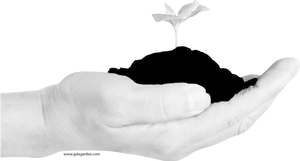Composting to begin on the Hill
by Russ Doubleday '11
SENIOR EDITOR
Recyclemania has wrapped up for the year, and Hamilton has made large strides to increase the amount it recycles. Starting on Monday, April 1, the College will begin composting its food waste, which will further decrease the amount of waste the college sends to landfills.
After about a year, the composted material will turn into a nutrient-rich fertilizer and soil product which can be used across campus, including in the community garden and on the College’s athletic fields. The benefits of composting will not be evident up front, but eventually, the College will not need to look further than its own backyard for fertilizer and fresh soil. Composted soil and fertilizer is more nutrient rich and holds moisture and helps prevent erosion better than other fertilizers. Jen Santoro ’11, a member of the Recycling Task Force, stated that the College can compost 20 tons of food waste a month, which will increase Hamilton’s recycling rate by an estimated 10 to 15 percent. “This ultimately helps us save money and the environment,” Santoro said. Until now, this food waste had been going directly to a landfill. The school will be working with Bon Appétit to divert food waste for composting purposes.
Composting has been on the Recycling Task Force’s agenda for a while, but finding a practical way to compost has been difficult. Composting is not simply putting food waste in a pile and waiting for it to decompose. Rather, the carbon and nitrogen levels in the compost must be monitored so that the bacteria decomposing the waste have the right balance of nutrients to survive. Compost piles must be kept at about 40 to 60 percent moisture and be turned over regularly so there is enough oxygen in the compost for the bacteria to live. The composting location must be able to accommodate the large amount of food waste Hamilton generates and also must be practical for maintenance of the compost.
Rather, the carbon and nitrogen levels in the compost must be monitored so that the bacteria decomposing the waste have the right balance of nutrients to survive. Compost piles must be kept at about 40 to 60 percent moisture and be turned over regularly so there is enough oxygen in the compost for the bacteria to live. The composting location must be able to accommodate the large amount of food waste Hamilton generates and also must be practical for maintenance of the compost.
Although composting has long been one of the Recycling Task Force’s central goals, this year starting a composting system was part of the pledge Hamilton made as part of RecycleMania. Composting will begin just as the RecycleMania competition ends. According to Assistant Director of Physical Plant Terry Hawkridge, Hamilton has performed better than ever in this 10-week collegiate contest. There are several categories in which colleges and universities across the country compete. As of week five, Hawkridge reported that the College had a recycling rate of 24.79 percent. Although this is a five percent increase over last year’s effort, Hamilton only places 158th out of 274 schools in this category. But in the amount of recycled material per person competition, Hamilton stood in 37th place out of 363 schools at the eight week mark. At last check, the College was recycling at a rate of 18.16 pounds per person. Although final results are not out yet, it is evident that Hamilton has greatly improved its recycling rates this year.
Santoro said there are three reasons why the College is recycling at a higher rate this year. First, the Recycling Task Force has worked with Bon Appétit to reduce the amount of cardboard boxes that are placed in the trash. The greater community has also been more diligent at recycling cardboard waste. Second, the growing success of Cram and Scram has eliminated a lot of waste at the end of school year. Instead of throwing out goods, Cram and Scram takes this “waste” and resells it at the beginning of the school year. Third, Santoro noted that the College has simply become more aware of the recycling options on campus, and students and staff are being more responsible in taking the extra step to recycle.
“Things like the debut of composting, seeing all the recycling bins around campus, and the new ‘What is Recyclable?’ boards in the dining halls are making a difference in the student body’s mind set,” Santoro explained, “and that’s something we’re really glad to see at Hamilton.”
Hawkridge submitted a final report to RecycleMania on Wednesday, April 6, but the final results are not presently available. RecycleMania began in 2001 as a competition between two schools in Ohio. Ten years later, this 10-week recycling and waste reduction contest has 527 participating colleges and universities. While the program is competitive in nature, RecycleMania aims to promote friendly competition with the goal of increasing recycling participation at colleges and universities, as well as raising awareness to each institution’s waste management programs and capacity to recycle.
